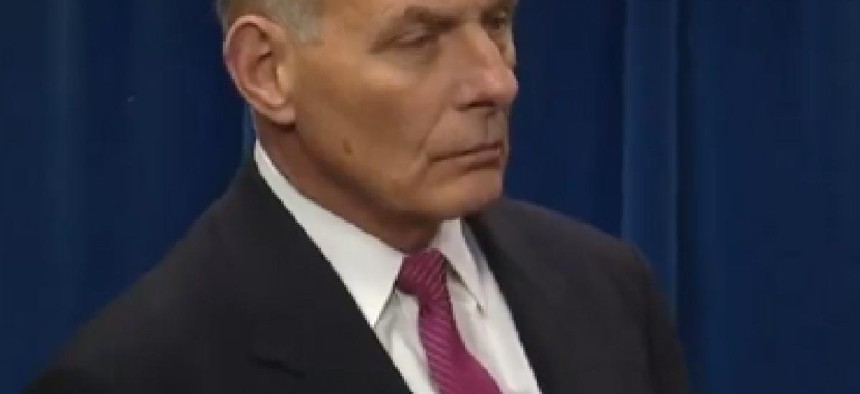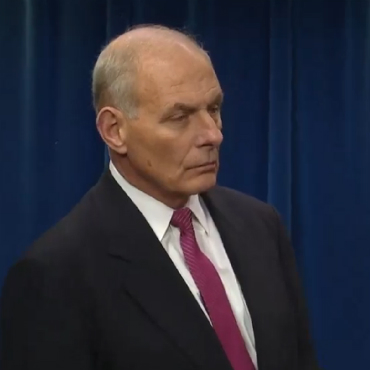DHS explores the details of 'extreme vetting'

Social media could play a large role in the Department of Homeland Security's development of new, stricter methods of vetting immigrants from terror trouble spots, according to the new DHS chief.

DHS Secretary John Kelly takes questions at a Jan. 31 press conference on the administration's executive order on immigration.
Browser histories, telephone contacts and social media use may all be part of a new regimen of data collected by the Department of Homeland Security as it develops the protocols for "extreme vetting," said the head of the Department of Homeland Security on Jan. 31.
Those details emerged as DHS stepped up to try to calm nerves about President Donald Trump's Jan. 27 Executive Order closing down for 90 days travel to the U.S. by citizens of Iraq, Syria, Sudan, Iran, Somalia, Libya, and Yemen and to make the case that the rollout of the policy was more orderly than it looked on television news.
The measure drew a firestorm of protests and court challenges, as airports and agencies began interpreting it over the weekend, amid accounts of stranded airline passengers, handcuffed travelers and civil rights violations, as well as reports that the order applied to permanent residents holding green cards.
In a Jan. 31 press conference, DHS Secretary Gen. John Kelly, Acting Commissioner of Customs and Border Protection Kevin McAleenan, newly named Acting Director of Immigration and Customs Enforcement Thomas Homan and Acting Under Secretary of DHS Intelligence and Analysis David Glawe explained how the order was implemented once the president issued it.
"This is not travel ban," said Kelly of the executive order. "It's a temporary pause that allows us to better review the existing refugee and visa vetting," he said.
The pause, said Kelly, will allow DHS to find the immigration system's strengths and weaknesses and encourage U.S. foreign partners to get on top of their collection of security data that allows travel to the U.S.
McAleenan admitted that the rollout of the policy was rocky on several fronts.
"I think it's fair to acknowledge that communications publicly and interagency haven't been the best in the initial rollout of this process," McAleenan said.
Kelly said DHS is considering how to construct a way to get a more complete picture of online activities of immigrants from trouble spots.
President Trump has promised to subject some immigrants from problem areas to "extreme vetting," but specifics of what constitutes the procedure have been scarce.
Kelly said a more thorough and in-depth accounting of the websites people have been visiting, their social media habits and even telephone contacts might be looked at as part of the process.
The process, he said, is aimed at supplementing the sometimes spotty or even non-existent data gathering capabilities of law enforcement in some of the seven countries listed in the order.
"Right now we're developing what additional vetting, extreme vetting might look like, and we will certainly work with countries on this," Kelly said.
The concern is that there are "a number of countries on the planet that don't have that kind of records keeping, police work, that kind of thing" that might alert U.S. authorities that a traveler constitutes a danger to the U.S., Kelly said. The seven countries covered by the executive order, "right now, for the most part, fall into that category,” Kelly said.
Kelly also addressed reports that Customs and Border Protection agents violated federal court orders issued in the wake of the executive order that called for detained travelers to get access to lawyers and to admit those who were in transit as well as those who had been issued visas before the executive order or those holding green cards.
"To the best of our knowledge no CBP officer knowingly, intentionally violated the court order," Kelly said.


